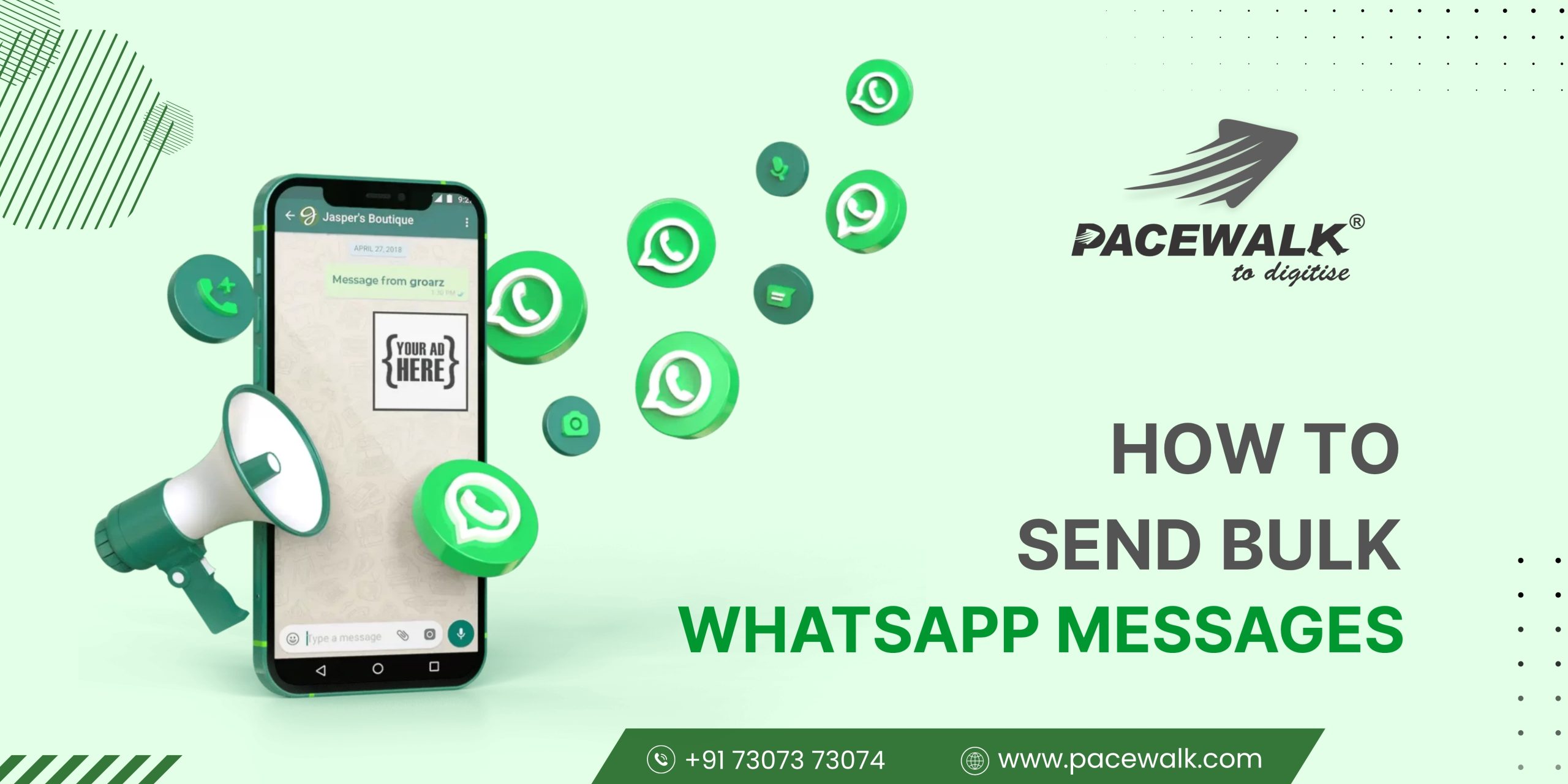In the dynamic landscape of digital communication, leveraging the power of Bulk WhatsApp Marketing Service has become an integral strategy for businesses aiming to connect with their audience on a massive scale. WhatsApp, one of the world’s leading messaging platforms, provides a unique avenue for businesses to engage with customers through personalized and direct communication. This specialized service allows organizations to send bulk messages efficiently, fostering a more direct and instantaneous connection with their target audience. In this article, we will delve into the key aspects of employing a Bulk WhatsApp Marketing Service, exploring the essential considerations, strategies, and best practices to ensure a successful and compliant outreach to your audience. Whether you’re a small business or a large enterprise, understanding the intricacies of bulk WhatsApp messaging is crucial for unlocking the full potential of this powerful marketing tool.
Understanding WhatsApp Business API Requirements
Facebook Business Manager Account: A Facebook Business Manager account is required to set up and manage your WhatsApp Business API account.
WhatsApp Business Account: You need to have a WhatsApp Business Account to use the API. This can be created through the WhatsApp Business app or by migrating an existing WhatsApp Business Account.
Phone Number: A dedicated phone number is required for the WhatsApp Business API. This number should not be associated with any other WhatsApp account.
Business Verification: Businesses need to go through a verification process to use the WhatsApp Business API. This involves submitting business documentation to verify the authenticity of the business.
Facebook Page: A Facebook Page is required, and it should be linked to your WhatsApp Business Account.
Approved Business Use Case: You need to define a specific use case for using the WhatsApp Business API, and it must comply with WhatsApp’s policies. Common use cases include customer support, notifications, and transactional messages.
Compliance with Policies: Businesses must adhere to WhatsApp’s policies and guidelines, including the WhatsApp Business Policy and Commerce Policy.
Technical Infrastructure: Your business should have the technical infrastructure to integrate with the WhatsApp Business API. This involves implementing the necessary software and systems to send and receive messages via the API.
Partner with a WhatsApp Business Service Provider: Businesses typically need to work with an official WhatsApp Business Service Provider (BSP) to access and use the API. These providers facilitate the integration process and ensure compliance.
Opt-in Consent: Users must explicitly opt-in to receive messages from your business on WhatsApp. This is a critical aspect of user privacy and consent.
Selecting a Reliable Bulk Messaging Platform
Selecting a reliable bulk messaging platform is crucial for businesses that want to engage with their audience through SMS, email, or other messaging channels. Here are some key factors to consider when choosing a bulk messaging platform:
Delivery Rates: A reliable platform should have high delivery rates to ensure that your messages reach the intended recipients. Check the platform’s reputation for deliverability and ask for statistics on their delivery rates.
Global Reach: If your business operates internationally, choose a platform that provides global coverage. Ensure that the platform supports messaging to and from the countries relevant to your audience.
Message Types: Different platforms support various message types, such as SMS, MMS, email, and more. Choose a platform that supports the messaging channels that align with your communication strategy.
Compliance and Regulations: Ensure that the platform complies with data protection regulations and industry-specific compliance standards. This is particularly important for platforms that handle personal or sensitive information.
Security Measures: Look for a platform that prioritizes security. This includes data encryption, secure connections, and measures to protect against unauthorized access to your messaging data.
Scalability: A reliable platform should be able to handle your business’s growth. Check if the platform can scale to accommodate increased messaging volume as your audience expands.
User Interface and Ease of Use: A user-friendly interface is essential for managing your messaging campaigns efficiently. The platform should provide easy navigation, message creation tools, and reporting features.
Integration Capabilities: Ensure that the platform can integrate seamlessly with your existing systems and applications. This might include customer relationship management (CRM) software, e-commerce platforms, or other tools you use.
Analytics and Reporting: Access to detailed analytics and reporting tools is vital for evaluating the success of your campaigns. Look for a platform that provides insights into delivery rates, open rates, click-through rates, and other relevant metrics.
Customer Support: Choose a platform that offers responsive customer support. In case of any issues or questions, having reliable support can make a significant difference in resolving issues quickly.
Cost Structure: Understand the pricing model of the platform. Some charge based on the number of messages sent, while others may have a subscription model. Be aware of any additional fees or charges that may apply.
Comprehensive API Documentation: If you plan to integrate the platform with your applications or systems, thorough and well-documented APIs are crucial. This ensures smooth integration and minimizes development challenges.
Customer Reviews and References: Research customer reviews and ask for references from the bulk messaging platform provider. Hearing about the experiences of other businesses can give you valuable insights into the platform’s reliability and performance.
Before making a decision, consider trying out a demo or trial version of the platform to evaluate its features and functionality. Additionally, review the terms of service and any contractual agreements carefully to ensure they align with your business requirements.
Managing Opt-ins and Opt-outs
Managing opt-ins (when users subscribe or consent to receive messages) and opt-outs (when users unsubscribe or withdraw their consent) is a critical aspect of any messaging campaign to ensure compliance with privacy regulations and maintain a positive user experience. Here’s a guide on managing opt-ins and opt-outs:
Managing Opt-ins
Clear Consent Mechanism: When users opt in, ensure that the consent mechanism is clear, transparent, and easily understandable. Clearly communicate what type of messages they can expect and how often.
Double Opt-in Process: Consider implementing a double opt-in process, where users confirm their subscription by responding to a confirmation message. This adds an extra layer of confirmation and helps prevent accidental or unauthorized subscriptions.
Provide Information: Clearly inform users about the value they’ll receive by subscribing. Let them know about exclusive offers, important updates, or relevant content they can expect.
Opt-in Forms: Use opt-in forms on your website, app, or other touchpoints to collect user consent. These forms should clearly state the purpose of collecting information and provide an option to opt in.
Segmentation Options: Allow users to choose their preferences or interests during the opt-in process. This enables you to send more targeted and relevant content, enhancing the user experience.
Compliance with Regulations: Ensure that your opt-in process complies with data protection regulations, such as GDPR, CAN-SPAM, or other applicable laws in your region. Include necessary disclaimers and privacy information.
Managing Opt-outs
Clear Unsubscribe Mechanism: Provide a clear and easy-to-use unsubscribe mechanism in every message. This can be a link or a keyword (e.g., “STOP” for SMS). Make sure the process is simple and immediate.
Promptly Honor Opt-out Requests: Once a user requests to opt out, promptly honor their request. This is not only a legal requirement but also essential for maintaining a positive brand image.
Confirmation of Opt-out: Send a confirmation message to users who opt out, confirming that their request has been successfully processed. This provides closure to the user and helps build trust.
Maintain Opt-out Lists: Keep and regularly update opt-out lists to ensure that you do not send messages to users who have unsubscribed. This is crucial for compliance and user satisfaction.
Provide Options to Manage Preferences: Offer users options to manage their preferences even after opting out. They may want to receive messages on specific topics or at a reduced frequency rather than fully unsubscribing.
Compliance with Regulations: Ensure that your opt-out process complies with relevant regulations. Provide the necessary information about the opt-out process in your privacy policy and terms of service.
Monitor and Analyze Opt-out Rates: Monitor opt-out rates over time to identify patterns or issues. Analyze the reasons behind opt-outs and use this information to improve your messaging strategy.
By implementing robust opt-in and opt-out processes, you not only comply with regulations but also build trust with your audience. Respectful and transparent communication is key to maintaining a positive relationship with your subscribers.
Monitoring and Analyzing WhatsApp Campaign Performance
Monitoring and analyzing WhatsApp campaign performance is essential for optimizing your messaging strategy and ensuring that your efforts align with your business goals. Here’s a guide on how to effectively monitor and analyze the performance of your WhatsApp campaigns:
1. Define Key Performance Indicators (KPIs):
Identify the specific metrics that matter most to your campaign goals. Common WhatsApp campaign KPIs include:
- Delivery Rates: Percentage of messages successfully delivered.
- Read Receipts: Number of messages read by recipients.
- Response Rates: Percentage of users who respond to your messages.
- Conversion Rates: Percentage of users who take a desired action after receiving a message.
2. Use WhatsApp Business API Analytics:
- Leverage analytics provided by the WhatsApp Business API or your messaging platform. This may include data on sent messages, delivered messages, read receipts, and more. Review these metrics regularly to gain insights into campaign performance.
3. Track User Engagement:
- Monitor user engagement by analyzing metrics such as clicks on links, interactions with message buttons, and overall user responsiveness. This helps you understand how users are interacting with your messages.
4. Segmentation and Personalization Analysis:
- If you are using segmentation and personalization in your messages, analyze the performance of different segments. Determine which segments are responding positively and adjust your strategy accordingly.
5. A/B Testing:
- Conduct A/B testing with variations in your messages to understand what resonates best with your audience. Test different message formats, calls to action, or timing to optimize your future campaigns.
6. Conversion Tracking:
- If your campaign involves driving users to take specific actions (e.g., making a purchase), implement conversion tracking. Measure the number of users who complete the desired actions after receiving your messages.
7. Feedback and Sentiment Analysis:
- Pay attention to user feedback and sentiments. If users provide feedback or express dissatisfaction, use this information to refine your messaging strategy and improve user satisfaction.
8. Monitor Opt-out Rates:
- Keep an eye on opt-out rates to understand user preferences and potential issues. High opt-out rates may indicate that your messaging frequency, content, or targeting needs adjustment.
9. Time-of-Day Analysis:
- Analyze the performance of your messages at different times of the day. Identify the time slots when your audience is most responsive and adjust your sending schedule accordingly.
10. Compliance Check:
- Regularly review your messaging practices to ensure compliance with WhatsApp policies and regulations. Failure to comply may result in restrictions on your business account.
11. Benchmarking Against Goals:
- Compare your campaign performance against the goals you initially set. Evaluate whether you’ve achieved the desired outcomes and identify areas for improvement.
12. Iterative Optimization:
- Use the insights gained from your analysis to iteratively optimize your future campaigns. Continuously refine your messaging strategy based on what works best for your audience.
13. Integrate with Analytics Tools:
- Integrate WhatsApp campaign data with broader analytics tools or platforms to get a comprehensive view of your overall marketing performance.
14. Data Privacy and Compliance:
- Ensure that your data collection and analysis practices comply with data privacy regulations. Protect user information and adhere to all relevant laws.
Regularly monitoring and analyzing your WhatsApp campaign performance allows you to adapt to changing user behaviors and preferences, ultimately improving the effectiveness of your messaging efforts. Adjust your strategy based on the insights gained to create more targeted and engaging campaigns.


